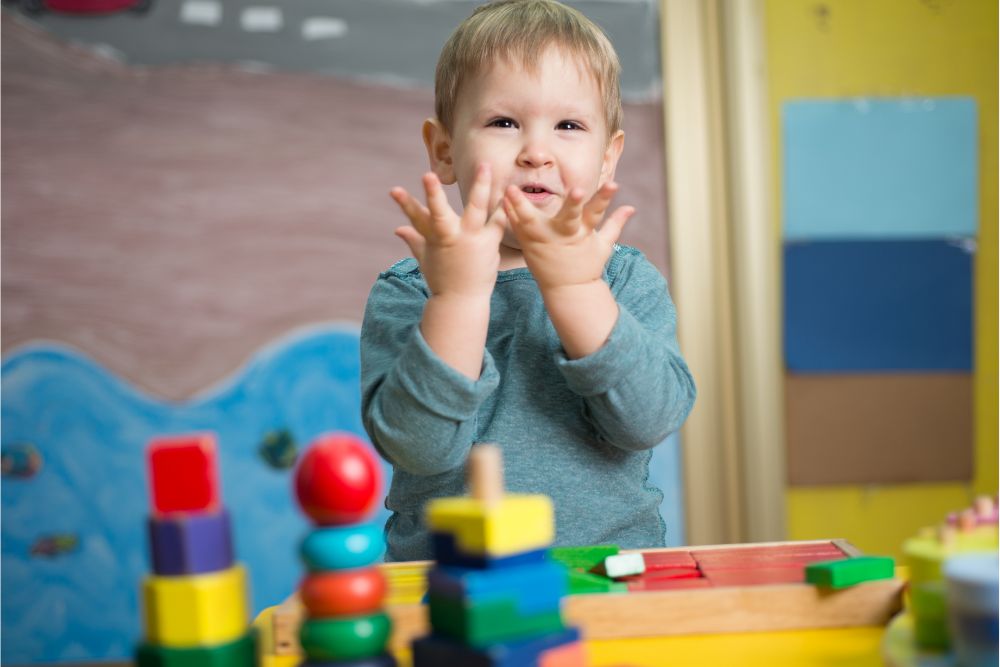
Creating a living space that is both fun and functional for children doesn’t have to mean sacrificing style or cluttering your home with excessive toys. Simple touches can transform any space into a playful environment that stimulates learning, creativity, and joy for kids. In particular, incorporating elements like wooden toys for 1 year olds and montessori toys can make your living area engaging and educational while keeping it tidy and harmonious. With these thoughtful additions, here’s how to create a fun and kid-friendly living space.
1. Embrace the Power of Wooden Toys
One of the simplest and most effective ways to introduce fun and function into your home is by incorporating wooden toys, particularly for younger children. Unlike plastic toys that often come with loud sounds, flashing lights, and overwhelming features, wooden toys provide a more minimalist, calming approach to play. These toys are typically designed to encourage imaginative play, hand-eye coordination, and problem-solving.
Wooden toys for 1-year-olds, in particular, are a great choice as they are durable, safe, and eco-friendly. Their timeless appeal can complement your living space’s aesthetic while also offering benefits to your child’s development. Simple wooden stacking toys, shape sorters, or push-and-pull toys can encourage fine motor skills and early problem-solving abilities. Plus, wooden toys are often made with non-toxic, child-safe materials, providing peace of mind to parents who are concerned about safety.
By incorporating such toys into your living space, you can strike a balance between style and playfulness. These toys often blend seamlessly into home decor, allowing you to maintain an organised and clutter-free environment that is also inviting for children.
2. Integrate Montessori Principles
The Montessori method of learning emphasises independence, exploration, and hands-on learning, and Montessori toys are designed to support these principles. By integrating these toys into your living space, you can create an environment that not only entertains your children but also fosters their cognitive, social, and physical development.
Montessori toys, such as wooden blocks, puzzles, and sensory toys, encourage children to think critically and explore at their own pace. These toys are often open-ended, meaning there’s no right or wrong way to play with them. This allows children to use their imagination and creativity, promoting a sense of independence. A carefully placed shelf in your living room with a few Montessori toys can create a designated play area that still feels cohesive with the rest of your home.
For example, a set of wooden building blocks can be left out in a stylish basket, inviting children to build and create, but also allowing for easy clean-up when the day is done. These simple, thoughtful touches will enable your living space to serve multiple purposes: a place where your child can engage in meaningful play, and where you can enjoy a relaxed, clutter-free environment.
3. Designate Play Zones Without Clutter
One of the biggest challenges of making a living space fun for children is managing clutter. To avoid toys spreading across the house, creating designated play zones is essential. A small corner of the room, equipped with a soft rug and a low shelf for wooden toys and Montessori toys, can serve as a perfect play area. This not only keeps the toys organised but also teaches children about structure and tidiness from an early age.
By rotating toys in and out of the play area, you can maintain your child’s interest while preventing toy overload. This approach aligns with the Montessori principle of having fewer, more meaningful toys available at any given time. This also keeps your living space visually appealing and free from excess clutter.
4. Encourage Exploration and Independence
To make your living space truly fun for children, it’s important to create an environment where they feel encouraged to explore and learn on their own. A low, accessible bookshelf filled with Montessori toys and age-appropriate books invites your child to choose their own activities. Placing items within their reach fosters independence and builds their confidence.
Additionally, incorporating natural materials like wood and soft fabrics into your living space provides a sensory-rich environment that stimulates your child’s curiosity. Incorporating plants, natural textures, and earth-toned colours can create a calming, nature-inspired space that both adults and children enjoy.
Conclusion
Making your living space fun for kids doesn’t require a complete overhaul. By incorporating simple touches like wooden toys for 1-year-olds and Montessori toys, you can create a balanced environment that is both playful and aesthetically pleasing. These elements help foster learning, creativity, and independence in your children while keeping your home stylish and organised. With thoughtful design and intentional choices, your living space can become a haven for both adults and children, filled with joy, creativity, and harmony.




